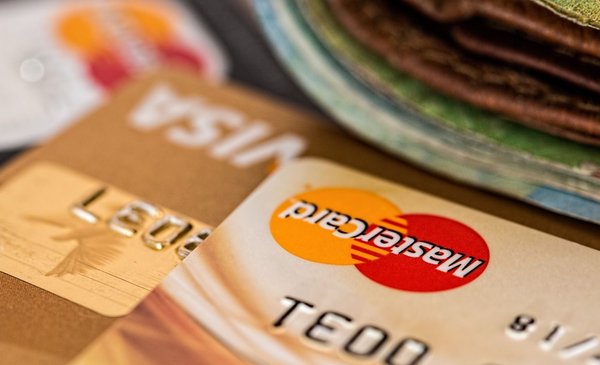The consumer credit market stabilized in the fourth quarter of the year, after a recovery in the autumn, but it does not have a firm impulse to return to an upward trend and the demand for credit remains at similar levels to the rest of the year and below the 2019 records, according to the Consumer Credit Market data from Pronto! (MMCC). The offer, meanwhile, shows a “prudent” behavior on the part of financial agents, says the report.
The outlook for 2021 indicates that the market does not evolve “evenly” as a whole, but that there are differences according to the economic-social segments and also in the bidders’ strategies, which are diverse.
The offer shows a relative recovery in the market, although in the last month there has been a decrease in the average amounts granted. Demand has also been picking up, although consumers are cautious about taking on new obligations, the report says.
The Pronto! Family Debt and Credit Survey! December reflects an improvement in Uruguayan expectations regarding their personal situation due to a decrease in pessimism. While in June only 16% believed it could improve in the next four months, in September that increased to 21%, which remained at the same level in the December survey.
Those who thought they would be worse off were 21% in June, 17% in September and 15.4% in December. The net balance went from a negative 5.3% in June, to a positive 3.8% in September and a positive 5.6% in December.
On the other hand, regarding the country’s economy, the view remains negative and is getting worse. Those who see improvements in the national economy went from 19% in June to 26.6% in September and 21% in December. Those who perceive that the economy will worsen are still the majority, and they increased again: they had fallen from 50.8% in June to 36% in September, but now in December they are 40%.
The net balance is negative, it went from almost 32% in June to 9.3% in September and to 19% in December.
In volume
The technical services of Pronto! recorded an increase in the stock of consumer loans in total volume of millions of dollars: in March it was US $ 6,181 million, in June it had increased to US $ 6,404 million and in September it was US $ 6,420 million. However, preliminary data for October indicates a drop of some US $ 22.6 million.
The evolution in constant pesos showed that the deceleration continues, which has been seen since 2014 and has worsened. As of September 2018, the market grew at a rate of 2%, while in September 2019 it was growing at 1.3%, in March of this year at 1.4% and in September at 0.2%. This decline continued in October and tends to remain negative in these months, always in real terms.
Market survey
The Quarterly Market Survey for Pronto! this year included a perception question about the impact of the same on the personal economy of each respondent. As a general result, 79% mentioned having had some type of affectation. This value had been 78% in June and 81% in September.

Pronto! Personal Debt and Credit Survey
–
Impact of the coronavirus on your personal economy
The people who answered having some type of debt in December were 69%, two percentage points more than in September 2020 and the same percentage as in June. In turn, in March this value was 73% and in December 2019 it was 75%.
Among those who have current loans with loans or credit cards, 45% responded that in the last four months they had some difficulty in paying. This figure in September was 50%, in June and March it was 39% and in December 2019 it was 43%.
When looking at the contracted product, the greatest difficulties were found by those who have at least one cash loan in force since 52% said they had had some difficulty in covering their payments in the last four months. This value was 57% in the September measurement.
Regarding credit cards, the values are 37% for December and 42% for September.
Regarding the usual behavior of payment of credit cards, 73% mentioned that they pay the total monthly balance, while 14% that they provide an intermediate value and 10% that they pay the minimum. 3% preferred not to answer.

Pronto! Personal Debt and Credit Survey
–
How often did you have money left over from your income in the last four months?

Pronto! Personal Debt and Credit Survey
–
You think they could access a cash loan if they applied for it today
70.7% of the total respondents mentioned having taken out a cash loan at some time in their life (mortgage and auto loans are excluded). Among the main reasons for removing them are: paying bills (50%), repairs at home (29%), paying for services such as UTE, OSE and Antel (17%), buying groceries (11%), buying furniture or appliances ( 10%), invest in work or business (7%), and travel (4%).

Pronto! Personal Debt and Credit Survey
–
Frequency of credit card use (%) among those who have at least one
38% of the total respondents expressed their intention to contract a purchase order or a cash loan in the next four months. Among those who would hire, 39% answered affirmatively to the question of whether if they applied for a cash loan today, they think it would be granted.
On the other hand, 72% of those who showed a propensity to hire in the next four months considered that they are currently in debt.
Regarding the destination of the loans or future purchase orders, they would be mainly to: pay other bills (27.5%); repair the home (13%); pay other loans or cards (12.5%); buy groceries (11.3%); face the impacts of covid-19 (10%); among others.
Those who said they would not hire in the next four months stated that they would not do so because: they do not need it (39%); They do not like to incur debt (13.3%); They do not know if they could pay the fees (9.6%); they do not want to incur more debt than they already have (5.7%); present unemployment or job instability (4.4%); among others.

Pronto! Personal Debt and Credit Survey
–
If you were offered a credit card today, how likely are you to accept it?
Finally, 8.6% answered that it is very likely that if they were offered a credit card, they would accept it; 6.3% said that it is quite probable; 26.7%, somewhat probable; 43.4%, nothing probable and 4.1% do not know.
– .


